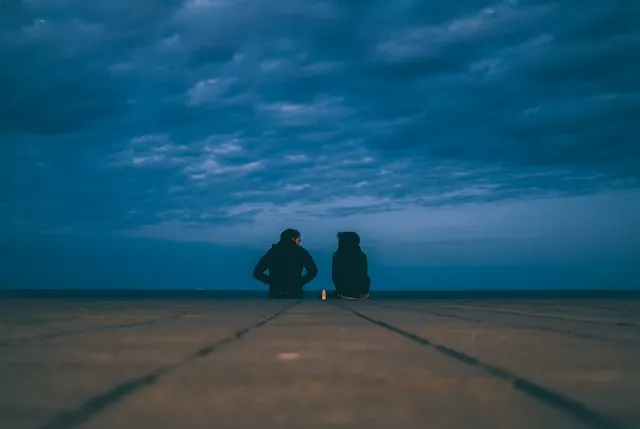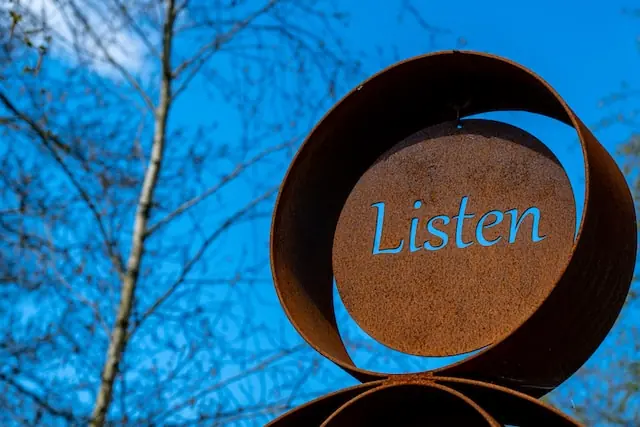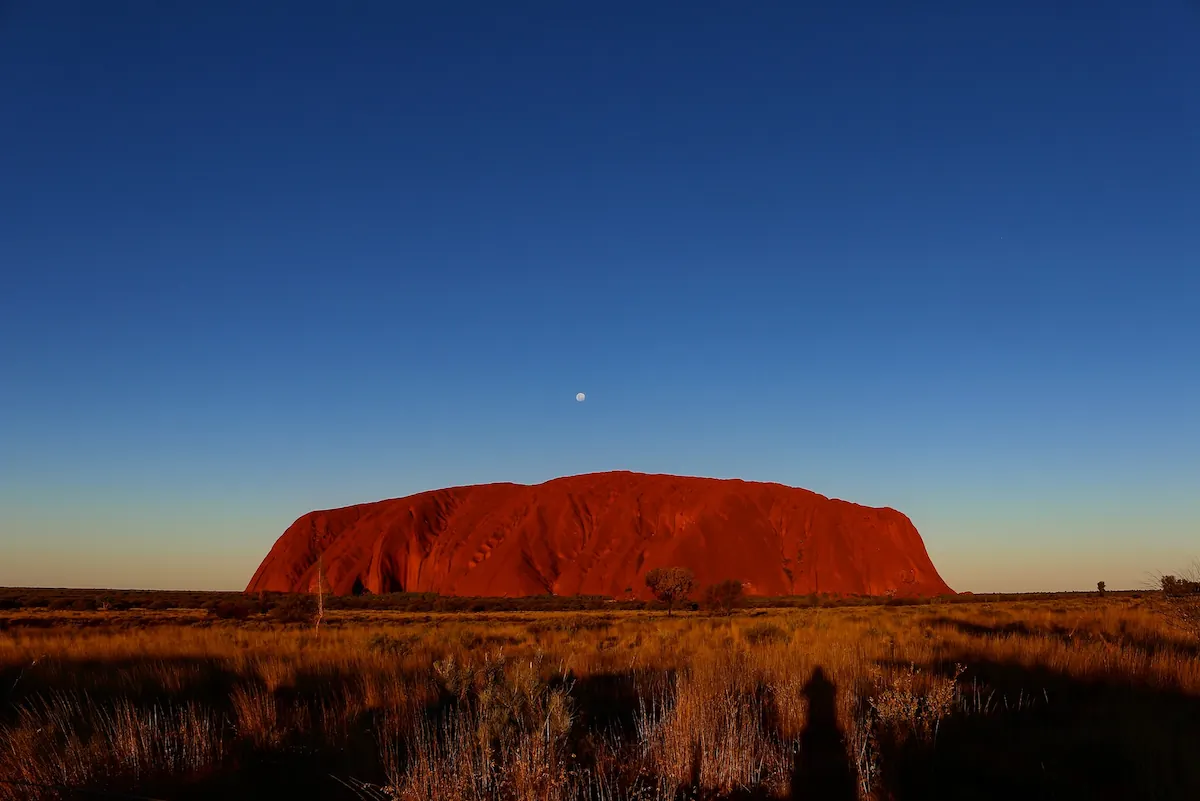It has been a few weeks since the failed referendum for the Indigenous Voice to Parliament, here in Australia.
On the day after the referendum, those that voted “Yes” woke up feeling like most Australians are racist, while those that voted “No” woke up relieved that they had avoided dividing Australia by race.
Before the referendum, I wrote about why I was voting “no” in my post Indigenous Voice to Parliament – Will It Divide Australia?. This is my follow-up as to why my vote didn’t change, and why.
Now the real question is, will we take this opportunity to grow and learn from this? Or will we simply throw accusations at each other and create further divide in our beautiful country.
While I voted “No”, I took no joy in the so called ‘win’. I wish I had not been forced to make such a decision. I wish our government had not been so blind, stupid and caught up in hubris to force this on Australians.
But what I have noticed is a lack of acceptance as to why Australia voted No. And this is an important fact that should not be lost.
It is easy to write-off the loss due to misinformation, confusion or yes, even racism. But I believe there is a much simpler explanation.
Let me explain…
Voice to Parliament Referendum – What was the Result?
The vote to enshrine an Indigenous Voice to Parliament in our constitution was defeated by a solid 61% No, to only 39% Yes.
Not only that, but it was defeated in ALL 6 states. The only territory to vote “yes” was the ACT – which might suggest that our political capital is completely out of synch with the rest of Australia!
What was often forgotten or overlooked in the lead up was, for a change in the constitution to ‘stick’ the results must achieve what is known as a double majority. This means that not only must the majority of Australians vote “yes”, but also a majority of states (meaning at least 4 states).
This makes the bar to success very high – some would say almost impossible in most cases.
So really, it was always going to be difficult to win. But I’m not sure many expected the result to be so one sided, across the board.
This is perhaps the first mistake of the Albanese government. Right up front there would appear to be at worst an arrogance, or at best sheer naivety, that it was going to be a relatively easy task.
I think that this belief was highlighted by the results of the early polls showing such high level of support. But this just lulled the “Yes” campaign into a false sense of security up front…
Does This Mean Australian’s Racist Then?
I think this is an easy view to form – You voted “No”, oh you must be racist!
Unfortunately, we saw this view promoted by the “yes” campaign a number of times, which really didn’t help their cause. You want to push someone further away from your view, call them names!
Now, I’m not so naïve to not think that some “No” voters did so based on racial beliefs. After all, just like a line from the Broadway show Avenue Q, “we are all just a little bit racist!”.
This comes back to our beliefs as to who we are, how we were raised etc. So yes, there is racial bias in all of us. And yes, that would have played a part in the “No’ vote.
But to write off the loss due to this view would be incredibly short-sighted.
Was the Referendum Already Racially Prejudiced?
There is a strong argument that what was being proposed in the referendum was already ‘racist’ by nature.
We were being asked to segment a group of Australians completely based on racial heritage!!!
And this was due to the fact that this race of Australians is somehow different, and possessed characteristics that made their lot in life somehow more challenging.
This is the very definition of racial prejudice.
So it’s unfair to judge the loss of the referendum as ‘racist’, when the whole referendum premise was based on racial biases.
Perhaps Australians Voted for Unity
This was one of the reasons I voted “No”. I did NOT want Australia divided along racial lines. And I believe this was the view of many “No” voters.
Perhaps Australians were voting for unity. Myself, like many, believe that we are all equal. We should be treated equally and fairly, and have the same, equal access to all services and levels of government.
Bob Hawke’s famous 1988 speech said it best,
“In Australia there is no hierarchy of descent; there must be no privilege of origin. The commitment is all. The commitment to Australia is the only thing needful to be a true Australian.”
Bob Hawke, 1988
How Did the Gay Marriage Vote Win?
I think it is worth reflecting on the national vote for gay marriage rights, and why that was so different.
Many people have compared this “Voice” referendum to the vote for Gay Marriage rights. In fact, I believe the “Yes” campaign thought they were in for a similar ride to success – based on the ‘vibe’.
However, they were in fact very different.
Firstly, the Gay Marriage was simply a plebiscite. What is that you ask?
What is a Plebiscite?
According to the Parliamentary Education Office;
A plebiscite is a national vote on a question that does not change the Australian Constitution. Governments can hold plebiscites to test whether people support or oppose a proposed action on an issue. The government is not bound to act on the result of a plebiscite.
But the real issue here is that we were asked to vote on something that really meant nothing to us, UNLESS we were Gay. Perhaps if we had gay children, or close friends we would have a strong opinion.
The raw fact was, if a loving couple wanted to get married, what possible impact would that have on anyone else?
Yes, some people, due to their strong religious beliefs for example, may feel gay marriage was something ‘wrong’ (I hate using that term!). And yet again, a gay couple that they will never know, being married, did not affect their life in any way.
I felt embarrassed that we were being asked to vote on something that did not affect us.
The real reason why we had the vote, was the fact that it was a Conservative government, who typically give a more thought to religious views than progressive governments.
To simply pass a law allowing gay marriage would be a slap to their religious supporters. So instead, they simply tested the waters with a plebiscite, a simply vote that would provide a clear view of the public.
From there they were simply doing what the public wanted and could mostly avoid any backlash from the religious sectors. And given it was a plebiscite meant they didn’t even have to act on the results if they chose not to.
But the Voice to Parliament was Different
This was not the case here with the Voice to Parliament. This was an all or nothing approach. A loss would always have a serious long-term impact. Even a ‘win’ would put in motion things that could have caused issues in the future (more on that below…).
What it Takes to Win a Referendum?
Its long been said that there are two main things required to win a referendum – particularly one where constitutional change is involved.
Firstly, you need bipartisan support. This means that all sides of politics need to work together to achieve the proposed outcome.
Secondly, there can be no ambiguity in the question posed, especially legal ambiguity.
Unfortunately for the Voice referendum, neither of these two things were achieved. This meant that the chances of the referendum being a success were very low, right from the start.
And this is one of the many things that really pisses me off with Albo and his approach to whole thing. Either his advisers had it totally wrong, and should be sacked, or he pushed ahead regardless, knowing it would all fail.
Achieving Bi-Partisan Support is Your Responsibility!
More than once the opposition parties put forward a position to achieve a joint approach.
The best example was their position on the inclusion of the Executive Government – it was a show-stopper. Remove it and there was room to move forward.
But this also meant that if it was removed, then the Liberal position would be called. They would be forced to either work with the government for referendum success, or be exposed for simply playing dirty politics.
So, I believe there was a possible path to bipartisan support, but it was ignored. The Labour government thought it had the voters already on side (from the last election results).
With something as important as this, you don’t take the approach “oh, they (Liberal) will never agree no matter what, so we aren’t going to waste our time!”. It is your responsibility to do whatever it takes to get to that point of agreement!
That is good government, that is great leadership. You owe it to the proposal, you owe it to the people you are representing!

Avoiding Ambiguity
The question of the legal position of the constitutional change will now be relegated to a ‘what if’ on a university assignment. We will never know what the changes may or may not have done.
The “yes” side were strong in their opinion that the proposed change was minor and did not leave the door open to be later exploited. The “no” side did not believe that was true – that all sorts of exploits could be argued with the new constitutional wording.
But here’s the thing, both sides had legal ‘experts’ lined up to argue the case. Now the one thing we can all agree on is where there is any form of legal ambiguity the line of solicitors rubbing their hands stretches to the horizon!
The bottom line is, having one side of politics saying, “we can’t support this”, then add more than a sprinkler of ambiguity and you get a voter base that is nervous to change.
So How Did the Referendum Really Fail?
What was the Referendum About?
Was the referendum about a Voice for Indigenous Australians?
Was it about Constitutional recognition?
The answer is simply Yes, but…
If either of these two questions were asked of Australia separately, then I strongly believe the result would have been an overwhelming YES!
Do you agree with Indigenous Australians receiving recognition in our constitution as First Nation Peoples? YES!
Do you think Indigenous Australians should have a Voice to parliament? YES!
So What Went Wrong?
But here’s the sneaky bit where I believe it all fell apart….
Do you think we should enshrine the Voice in our Nation’s Constitution, as a means of recognising Indigenous people? Say What??? No!
And that is how I believe the race was lost. People did not necessarily vote against a Voice to Parliament, and I do not believe they voted against constitutional recognition at all.
But the way it was worded and proposed gave people like me no choice but to vote No.
The Referendum was a vote for Racial Difference
I voted no, because of the Voice being enshrined into the constitution. It meant that there would be a section of our country’s operation that was racially divided.
Our Constitution describes how our country operates. From what elected officials do, to who has what responsibilities to serve the public good. It both represents ALL Australians, and ALL Australians can democratically participate in its operation.
But who gets to be on the Voice? Indigenous people only.
I just can’t agree with our constitution carving up responsibilities and access to government based on what your heritage is. It would therefore no longer represent all Australians equally, and elements of our democracy would be lost forever.
Misinformation and Lies
It’s human nature to look for a scape goat when you lose. And that goes 1000% in politics!
The easy target was apparently all the misinformation and lies that were spread about the voice. This was, and still is the biggest argument put forward by the “Yes” campaigners.
This argument appears to be supported by the fact that those with higher levels of education tended to vote “yes”. Somehow, if you were ‘better educated’ you could look past the lies. What a horrible, elitist view!
The “Yes” campaign needs to stop looking for scape goats like this and focus on what they did wrong.
Lack of Details Creates the Confusion
Right from the start there was a decision to keep the level of information about the Voice to a minimum. This was the lesson learned from the Republic Referendum loss. It tried to inform the public about the details, which resulted in confusion and defeat.
But the opposite is also true. The absence of clear information left a massive vacuum, which was then filled with ‘noise’. This noise ranged from guesses to assumptions, to yes, lies and misleading statements.

We were asked to vote on an idea, and the details would be sorted later. When it became clear that people wanted more details, there were none. And that just added to the suspicion that something was being “hidden”.
It became an easy target for the ‘No’ campaign to exploit.
The funny thing is, the volume of advertising for the ‘Yes’ campaign massively outweighed the ‘No’. So in terms of how much and how often the public heard from either side of the argument, the ‘Yes’ side blitzed it!
But volume over substance became the issue. The same high-level message with no detail simply was never going to cut through. People were crying out for more details, and there were none.
Again, a massive mistake by the Albanese government!
What Would Have Won?
As I have touched on above, I think there were a couple of areas that Australians would have voted ‘Yes’ on.
A simple question to include constitutional recognition of Indigenous people as First Nations people, would have easily won favour. A preamble with similar wording from the Republic Referendum would have been an easy win.
This was indicated in the early polling where people were asked something similar. Do you support recognition of First Nations peoples as the first custodians of Australia – overwhelmingly YES!
The Voice by itself never needed a referendum. As I covered in my first blog post, the Albanese government could have legislated this in its first month in office. If it was that important and could have such a positive impact, then why wasn’t it done this way?
Imagine This…
It’s the day after the referendum to recognise First Nations people in the constitution. It has won with an overwhelming majority!
The Voice to Parliament has been in place for over 12 months (legislated), and is already providing clear paths forward to ‘close the gaps’.
Australia feels just that little bit more united, and hopefully the Indigenous community are beginning to feel heard. The Albanese government is well supported and has a major ‘win’ under its belt.
With this support the Albanese government is heading for a second term win, where it can move its agenda of reconciliation even further along.
But Instead We Were Crapped On….
But instead, we are left with a burning crap heap and no proposed path forward. Despite the obvious signs of failure all along, the government chose a path leading to disunity and stall of recognition.
Unbelievably stupid and incredibly sad.
Where to Now?
The simple answer is, I don’t think anyone truly knows. Clearly, the government did not have a ‘Plan B’. They chose to lay it all on the line in one hit, and failed.
As always in politics, you simply must distance yourself from any loss to survive. And that is what Albanese and his government are doing.
It could just be good timing, but spending the past 2-3 weeks out of the country being wooed by the US then China, has helped. Don’t worry about the train-wreck over there, look at what we are doing here!

As I said in my first post, before the referendum, I don’t know what our Indigenous peoples would do waking up after a failed vote. Well here we are, and it would seem that the government has no answers to help ease the situation.
Getting back to basics might help. All the way through the Voice campaign we were told of the key issues that many indigenous folks face. That would seem to be a great place to start.
As a side note, I am really surprised by the lack of government support for a Royal Commission into sexual abuse of Indigenous children. Indigenous children are 8 times more likely to be victims of child abuse, but there was no support to take action???!!!!
This I simply will never understand – but I feel somewhere here there lies the reason why little progress is made around these issues.
So, I must ask, was the Voice simply a political vanity project that was never going to result in real change?
Summary – What We Should Learn
Regardless of what the losing side in any vote thinks, the public is not stupid. Australia is an amazing place and a country we are very lucky to call home.
It doesn’t get to be this way by the people being making poor, ill-informed decisions.
There were signs all the way through this process that it was doomed to fail. The Albanese government were racing down a road with sign-post everywhere screaming “Dead-End”, “Cliff Ahead”.
So, to me the ‘blame’ if there must be any sits firmly with the government. Show leadership, accept the responsibility, and make a true difference to the issues raised.
That said, let’s stop blaming, and take the time to learn what was so obviously shouted by the majority of Australia.
We want a united Australia, where everyone is treated equally, regardless of heritage, race or where you were born. What really counts is our commitment as individuals to Australia to keep that dream alive.
That is what Australia voted for – unity, fairness and importantly equal and shared responsibility to make Australia the best it can be.
I would love to hear your thoughts below!
Until next time….




Leave a Reply